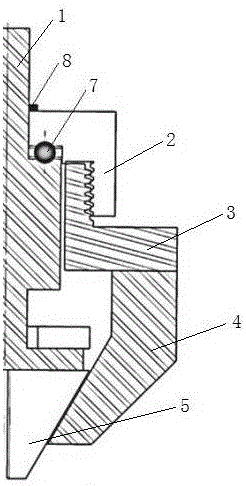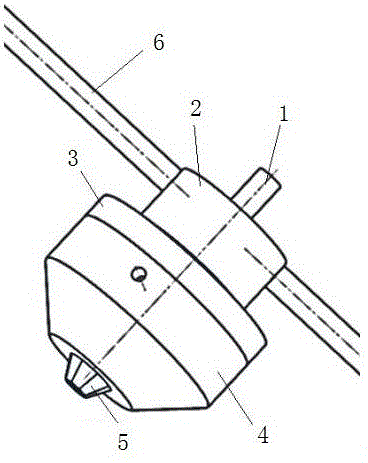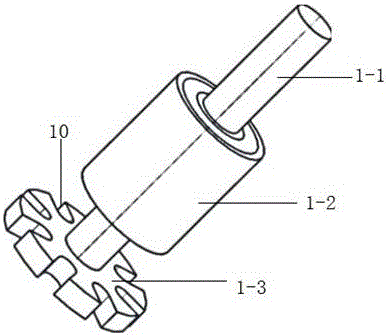Self-adaptive clamp for superconductive multi-strand wire
A multi-strand wire self-adaptive technology, applied in the direction of measuring devices, instruments, scientific instruments, etc., can solve the problems that the fixture cannot provide evenly distributed clamping force, the shape and structure of superconducting strands change, and the experimental data of strands is distorted. Achieve the effects of preventing looseness or slipping, wide application range, and ensuring accuracy
- Summary
- Abstract
- Description
- Claims
- Application Information
AI Technical Summary
Problems solved by technology
Method used
Image
Examples
Embodiment Construction
[0040] The present invention and its effects will be further described below in conjunction with the accompanying drawings and embodiments.
[0041] Such as Figure 1-9 As shown, an adaptive clamp for superconducting multi-strand wires includes a support shaft 1, a mobile control part 2, a clamp cover 3, a tapered cavity 4 and a wedge-shaped clamp block 5, and the clamp is composed of the clamp cover 3 and the tapered cavity 4 The outer casing; the mobile control part 2, the clamp cover 3 and the tapered cavity 4 are sequentially set on the support shaft 1, wherein the middle part of the mobile control part 2 connected with the support shaft 1 is provided with a pressure bearing 7, and the upper end of the mobile control part 2 A circlip 8 is provided, so that the position of the mobile control part 2 on the support shaft 1 is relatively fixed; the inner wall of the mobile control part 2 is connected with the upper part of the clamp cover 3 through threads, and the lower part ...
PUM
 Login to View More
Login to View More Abstract
Description
Claims
Application Information
 Login to View More
Login to View More - R&D
- Intellectual Property
- Life Sciences
- Materials
- Tech Scout
- Unparalleled Data Quality
- Higher Quality Content
- 60% Fewer Hallucinations
Browse by: Latest US Patents, China's latest patents, Technical Efficacy Thesaurus, Application Domain, Technology Topic, Popular Technical Reports.
© 2025 PatSnap. All rights reserved.Legal|Privacy policy|Modern Slavery Act Transparency Statement|Sitemap|About US| Contact US: help@patsnap.com



